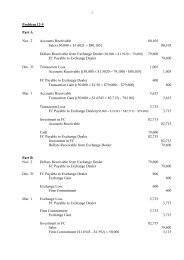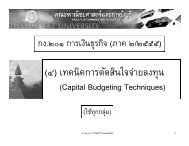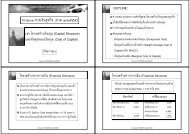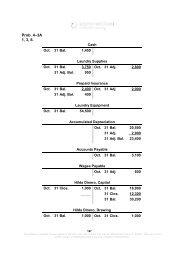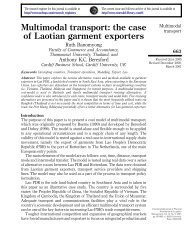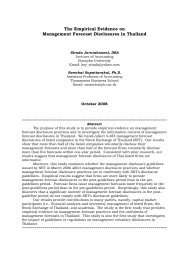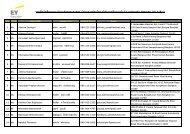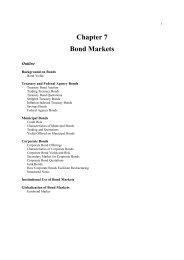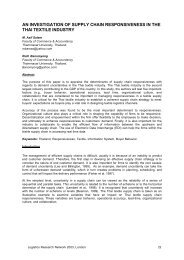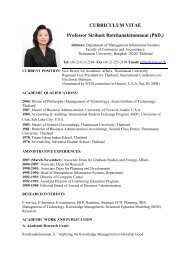Human capital and performance: A literature review
Human capital and performance: A literature review
Human capital and performance: A literature review
Create successful ePaper yourself
Turn your PDF publications into a flip-book with our unique Google optimized e-Paper software.
Contingency or ‘fit’ approaches<br />
A central tenet of strategic human resource management is that there should be vertical<br />
linkage between HR practices <strong>and</strong> processes <strong>and</strong> the organisational strategy of the firm. The<br />
strategic posture of the organisation tends to influence the style <strong>and</strong> approach of human<br />
resource activity (Wright & McMahan, 1992). Strategies vary, <strong>and</strong> a number of researchers<br />
have investigated how HR practices vary with differences in a strategic approach. Most work<br />
in this area employs a set of traditional strategy typologies, such as cost, flexibility <strong>and</strong> quality<br />
strategies (e.g., Youndt et al., 1996) or Miles & Snow’s (1978) framework of prospector,<br />
analyser <strong>and</strong> defender (Delery & Doty, 1996). The emphasis here is on alignment, or fit,<br />
between the external environment, the strategy of the organisation, <strong>and</strong> HR. The notion of the<br />
fit approach has been articulated by several HR scholars, such as Venkatraman (1989), <strong>and</strong><br />
the benefits of tight coupling to ensure efficiency <strong>and</strong> effectiveness in achieving<br />
organisational aims have been well attested. But some authors (e.g., Orton & Weick, 1990;<br />
Perrow, 1984) have argued that such tight links may represent a barrier to adaptability <strong>and</strong><br />
flexibility.<br />
In the work of Huselid (1995), it reveals that many successful organisations tie the HRM<br />
practices with the strategy, as witnessed from the higher <strong>performance</strong> outcomes. Delery &<br />
Doty (1996), in a sample of 1,050 banks, find the modest support for a fit with the Miles &<br />
Snow (1978)’s typology. Youndt et al. (1996) give support for this type of fit in a sample of<br />
97 manufacturing plants. MacDuffie (1995), in contrast, explicitly rejects this hypothesis,<br />
claiming that, in his study of car manufacturing plants, there is no evidence in relation to a<br />
‘fit’ of the appropriate HRM practices in mass production as apposed to that in flexible<br />
production.<br />
Universal or ‘best practice’ approaches<br />
A second perspective on human resources <strong>and</strong> <strong>performance</strong> linkages is the idea of ‘best<br />
practices’, or ‘high <strong>performance</strong> work practices.’ This view emphasises the need for strong<br />
consistency among HR practices (internal fit) in order to achieve effective <strong>performance</strong>. It<br />
receives a high degree of empirical support (see Huselid, 1995; Delaney & Huselid, 1996;<br />
Arthur, 1994; Ichniowski et al., 1994; MacDuffie, 1995). Pioneered by the prominent<br />
researcher Pfeffer (1994), there are 15 HR practices (see Table 2) that have primarily been<br />
<strong>Human</strong> <strong>capital</strong> <strong>and</strong> <strong>performance</strong> 11



